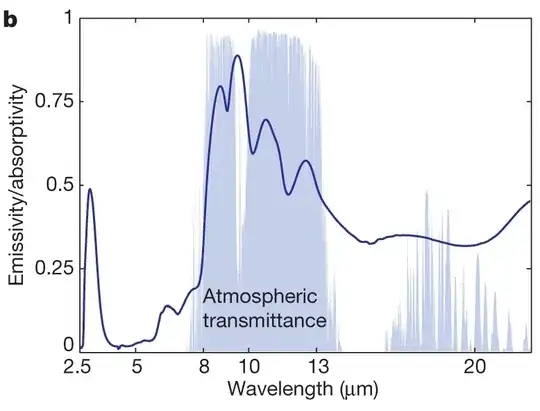I was reading this article: Passive radiative cooling below ambient air temperature under direct sunlight
The authors are improving upon the age-old idea of reflecting incoming sunlight while radiating heat away. The point that I don't get is why do they need to meet this criteria:
...radiate heat to outer space through a transparency window in the atmosphere between 8 and 13 micrometres.
They also state that
Further, the cold darkness of the Universe can be used as a renewable thermodynamic resource, even during the hottest hours of the day.
Further in the article they do not elaborate on why specifically they need to use the outer space as a heat sink. The equations don't imply anything about that.
The only way I can figure out this being useful is not heating the atmosphere and preventing the heat from being trapped at all, radiating it away from Earth, thus combating global warming. The fact that the apparatus is using outer space as a heat sink or just using the atmosphere should not have any significant impact on radiative cooling properties. Is this reasoning correct?
